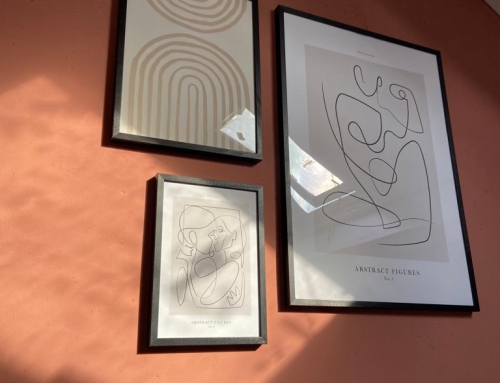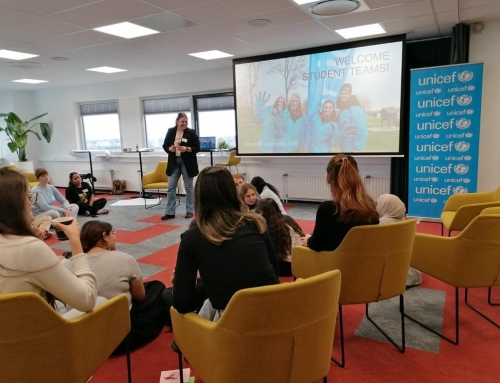Beschermjassen; By immersing people in the group or culture from which they come, they are able to regain themselves. They become powerful again and come up with solutions for their situation. It concerns very basic things such as photos from then, food, language, culture. (A Dije, 2010)
In order to achieve successful integration, it is important that migrants are able to interweave with their original culture. In a country that sends the message that the dominant culture is also the lace, it is difficult to connect the original and the new cultural perspectives. (Meurs, 2005) Professor Halleh Ghorashi compared the way in which Iranian women in North America and the Netherlands settled in the new society. (Ghorashi, 2003) Iranian women in the Netherlands proved difficult to enter into an emotional relationship with the Netherlands. While in North America ways were found to link original rituals such as an Iranian feast to an American tradition such as Thanksgiving. North America offers room for cultural individuality, while the Netherlands requires you to adapt or return to the country of origin.
I can link this to the mind- set of the education system in the Netherlands. The education system also expects third culture kids to adapt to their curriculum. Their own culture is often not promoted within the curriculum and they are expected to adapt to an I-system, which I wrote about in my previous blog. If migrants are given room for cultural individuality, they can feel more at home and connect worlds.
Vulnerable children feel unsafe and get confused if there is no connection with their frame of reference. As a result, they can no longer learn and their empathy ability stops acutely. It can be as a little as a school ritual which makes a child feel left out. For example, in the Netherlands its very common to shake hands with students or parents. However, have you ever thought that this is different in other cultures. A teacher can make a student feel uncomfortable when it is unusual for them.
During my research I came across the model of ‘Beschermjassen’. This model can be applied within education systems, organizations or even at home.
‘Beschermjassen’ bring you back to the strengths of your family your culture and your history. It is the safe disclosures that help one get through a difficult phase. Everyone needs ‘beschermjassen’ in times of difficulty and vulnerability.
When young children attend primary school for the first time they often bring a teddy bear from home. Going to primary school for the first time is a transition where children need to learn to be away from home. Bringing this teddy bear makes them feel safe which is needed to thrive in the new situation. This teddy bear is called a transitional object.
Transitional object; a designation for any material object (typically something soft—a piece of cloth, say, or part of a plush toy) to which an infant attribute a special value and by means of which the child is able to make the necessary shift from the earliest oral relationship with the mother to genuine object-relationships. (Winnicott, 1953)
We can see this teddy bear as a ‘beschermjas’. I can link this to myself. I wear a bracelet, which I don’t take off. This bracelet has a charm of every country I have lived in. For me this is my ‘beschermjas’ because it reminds me of where I come from.
I want to link the model of ‘Beschermjassen’ to culturally responsive teaching which I wrote about in my first blog. The educational approach of culturally responsive teaching states the importance of including students’ cultural references. Culturally Responsive Teaching is a pedagogy that recognizes the importance of including students’ cultural references in all aspects of learning (Ladson-Billings,1994). I therefore make the bridge that the model of ‘Beschermjassen’ could be a method used to move from traditional education to culturally responsive teaching.
To understand culturally responsive teaching, we need to understand the link between motivation and culture. Research has shown that the response a student has to a learning activity reflects their culture.
Engagement; Engagement is the visible outcome of motivation, the natural capacity to direct energy in the pursuit of a goal. (Raymond, 1995)
Our emotions are socialized by culture- through language, values and beliefs and our emotion reflect on our motivation to learn. For example, I am a dancer and when I have difficulty in mastering a skill, I get frustrated but this gives me increased determination to keep practicing. Yet other people, with a different set of cultural beliefs may feel this frustration and stop and others only feel enjoyment in mastering new skills. This response reflects on our cultures as they differ in the definitions of opportunity, gratification, novelty of appropriate responses. Linking this back to the education system, a student’s learning activity reflect on their culture.
“While the internal logic as to why a student does something may not coincide with that of the teacher, it is, nonetheless, present. And, to be effective, the teacher must understand that perspective. Rather than trying to know what to do to students, we must work with students to interpret and deepen their existing knowledge and enthusiasm for learning. From this viewpoint, motivationally effective teaching is culturally responsive teaching.” (Brown University, n.d.)
Intrinsic motivation is when we engage in an activity because it is driven from our own behavior. We simply enjoy doing it or see opportunity to learn. This contrasts with extrinsic motivation, which is when we engage in an activity to earn external rewards.
For example, participating in sports, reading a book or gardening are activities which we undertake for pure enjoyment; intrinsic motivation. However, if we read a book because of an exam, this is extrinsic motivation as we don’t want to fail. (Cherry, K. 2019)
Theories of intrinsic motivation accommodate cultural differences. However extrinsic motivation methods are often used within the classroom, which excludes culturally different students from engagement. This system assumes that human beings will strive to learn when they are externally rewarded for specific behavior or punished for lack of it. For example, using a grading system. It is part of human nature to be curious, to be active, to initiate, to make meaning from experience and to be effective at what we value. These primary sources of motivation reside in all of us, across all cultures, when students can see what they are learning makes sense and is important, their intrinsic motivation emerges creating greater energy for learning.
The education systems still use traditional approaches to teaching. As mentioned above, extrinsic rewards are used to motivate students. I can see this as the education system being stuck in a system world. A system world is where procedures, rules and regulations are implemented and followed. Society implements this to be able to control the outcome of situations and to create a structure. If the education system would use a more holistic approach. A holistic approach means taking care of something totally in all aspects. (Qoura, n.d.) By doing so, the education system will transfer into a life system rather than following the rules and regulations implemented. I will be diving into this topic more in my next blog.
I have now studied a different approach to education where we look at how motivation effects engagement within the classroom. I can conclude that culturally responsive teaching is an effective approach which can be used in ‘nieuwkomersgroepen’. The model of ‘beschermjassen’ would be a nice method to use to start a transition to culturally responsive teaching. To get a greater understanding on the reasoning of traditional approaches within education I will be researching Habermans theory of Society 3.0 and looking at the holistic approach to education.
References
Brown university (n.d.) Culturally Responsive Teaching
Retrieved March 25 from https://www.brown.edu/academics/education-alliance/teaching-diverse-learners/strategies-0/culturally-responsive-teaching-0
Cherry, K (2009) Understanding Intrinsic Motivation.
Retrieved March 25 from https://www.verywellmind.com/what-is-intrinsic-motivation-2795385
Ghorashi, H. ‘Ways to survive, battles to win: Iranian women exiles in the Netherlands and the United States’, New York, Nova Science Publishers, 2003
Habermans (1925) System world and Life world
Retrieved 25 March from https://en.wikipedia.org/wiki/Maggie_Haberman
Meurs, P. ‘Toekomst in herkomst, therapeutisch werken aan het constructief verweven raken van acculturatiestreven en oorspronggehectheid.’ Ouderschap en ourderbegeleiding, 2005
Qoura (n.d.) Hollistic approach
Retrieved 25 March from https://www.quora.com/What-does-Holistic-Approach-mean-Please-elaborate
Raymond (1995) Engagement





